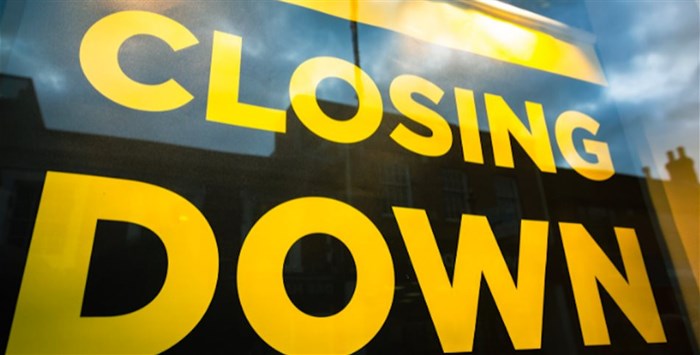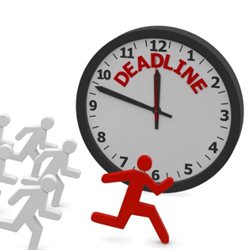Trending





 6 tips to help scale up your small businessGrant Lapping
6 tips to help scale up your small businessGrant Lapping
Why SMEs are unsuccessful in tenders

Here, we discuss some concrete ways to shift your proposals from self-centred to client-oriented and tips to avoid other pitfalls, so you can inspire confidence in your ability to help clients succeed, and propel your business to new heights!
Mistake 1: Not complying with the requirements

Non-compliant tenders and proposals are like the tip of an iceberg – they tend to indicate bigger underlying issues in a bid process. When it comes to tenders, the rules are written in stone. Not complying will lead to instant disqualification.
Non-compliance can take many forms: providing pricing information in the wrong format, providing incomplete or incorrect documentation, putting forward a solution that doesn't meet the client's technical specifications, and many other possible errors.
Best practice
- Thoroughly read the tender document. Read the entire tender document carefully several times. This helps you understand the evaluation criteria, requirements, and expectations.
- Seek clarification. Don't hesitate to contact the issuing authority for clarification if you encounter any ambiguity or uncertainty about the tender requirements. Addressing unclear points early on means you can align your response to the client's expectations.
- Prepare early. Start preparing your response well in advance, giving yourself ample time to craft a well-structured, compliant, and persuasive proposal. This reduces the risk of omissions and mistakes.
- Utilise a checklist. Create a checklist based on the tender document and the evaluation criteria to ensure you don't overlook important requirements, such as required documentation and key points to address.
- Cross-reference your proposal with the criteria. As you prepare your proposal, cross-reference each section against the evaluation criteria to verify that you have addressed all points.
Mistake 2: Not optimising against the evaluation criteria

Ironically, when your team is rushing to compile your response, they may not focus enough on the client's evaluation criteria, although these are arguably some of the most important things to consider!
It will increase your chances of winning if you optimise your proposal against evaluation criteria. This means being strategic: yes, it is always crucial to meet the evaluation criteria.
But you can go beyond just a 'tick-box' approach to these criteria to give yourself the winning edge.
Best practice
Consciously plan your proposal structure based on the evaluation criteria and demonstrate how your offering meets and exceeds those criteria. Doing this has several advantages:
- It appeals to evaluators on a cognitive and affective level. Evaluators' work becomes easier when you emphasise how you fulfil the evaluation criteria. They get a sense that your organisation is attentive, proactive, and customer-centric – increasing your chances of a high evaluation score.
- It gives you a competitive edge. Your proposal stands out when you explicitly tailor your proposal around evaluation criteria and crucial details – helping you outperform competitors.
- It helps you proactively problem-solve. Focussing on the evaluation criteria gives you the foresight to anticipate possible concerns and questions from the evaluation committee and address those proactively in your proposal. For example, you strengthen weaker areas in your offering and highlight areas where your offering excels and can bring additional value to the client.
Mistake 3: Failing the 'so what?' test

To persuade the client, it isn't enough to simply describe your offering. For a winning response, ensure they can always see how your solution/offer will benefit them and create concrete value.
To help with this, check that every statement in your proposal passes the 'so what?' test, i.e. from the client's point of view, what actual value do they gain from what you are stating in the proposal?
Best practice
There isn't a one-size-fits-all way to determine if a statement in a proposal passes the 'so what?' test. But one helpful tool is this simple two-step formula, which checks whether your statements are convincing, relevant, and value-driven. For example:
Original statement: "We have a team of highly experienced graphic designers."
The revised statement will be: "We have a team of highly experienced graphic designers, so you can be assured of innovative and engaging designs that will capture your target audience's attention and elevate your brand's image."
Mistake 4: Not putting the customer first

A common and significant oversight is not focussing on the customer's needs. Position yourself as deeply understanding their perspective, challenges, and the outcomes they have in mind.
When they see your highly accurate understanding of their context and pain points and how your solution creates value for them, you have a good chance of standing out from the competition.
Best practice
- Understand the client's needs and goals: Begin by deeply understanding the client's requirements, problems, and objectives. Research their organisation and review their tender document closely. Engage with the client before writing the proposal, for example, through sales engagements or sending clarification questions as relevant.
- Craft a solution tailored to the client's needs: Ensure your solution addresses the client's specific challenges and objectives. Show you've given thought to their unique situation and solutioned for it.
- Structure your proposal around the client's needs: Ensure each proposal section and section heading speaks to a specific client issue or requirement. Emphasise any benefits (e.g. cost savings), and be specific and clear (why would this be a cost-saving? How much would it save them per year/month/week?).
- Use the client's language: Use the client's language and terminology to demonstrate your understanding of them and their industry. This personalises the proposal and shows you've done your homework.
- Back up your claims: Provide quantifiable evidence, such as statistics, case studies, or testimonials, which underscore the effectiveness of your offering. Choose evidence that is relevant to the client's context.
- Offer superior client support: Indicate that you are committed to continuous support and explain what resources and staff support are available to the client, where relevant. This reassures them that they will be taken care of beyond the sale.
Mistake 5: Blending in with the crowd

Don't be lost among the other stacks of submissions that evaluators review. Focus on showing what factors set your organisation (or your offer) apart from the competition and add value to this client. These factors are known as differentiators.
Customers who can't see your differentiators are likelier to compare you with competitors based on price, convenience, or familiarity.
Best practice
- Embrace a client-centred approach. Again, the first thing to do is thoroughly understand their objectives, hurdles, and expectations. Use these to shape a solution that aligns with their unique needs.
- Establish a solid value proposition. Specify in the proposal the unique facets of your offering that cater to the client's specific issues and requirements. Express clearly how your solution directly addresses pain points.
- Emphasise your strengths. Highlight your specific (relevant) expertise, background, and resources, effectively demonstrating your capability and capacity to meet the client's objectives.
- Include case studies and client testimonials. This backs up your claims, conveys effectiveness, and builds trust and credibility.
- Compare your offering directly with the competition. Without referring directly to the competitor, mention areas where your product or service has an advantage over other providers in the sector.
- Show how your relationships and people set you apart. Your company's personnel can create a uniquely compelling experience. Find ways to showcase your skilled, friendly, responsive team in your proposal. This can make a significant difference, fostering trust and customer rapport.
Mistake 6: Being unclear and inconsistent

Clear communication is a must in proposals and tenders. Overly complex, unclear writing can adversely affect your business. It can lead the client to misunderstand the offer or not fully recognise its value and benefits, making your business appear unprofessional and unreliable.
When clients do not understand a proposal and cannot understand what they agree to, some clients may see the offer as risky.
Straightforward and precise proposals compel customers, but they lose interest in proposals that are hard to comprehend. So how can we clean up our act?
Best practice
- Ensure that all stakeholders in your company understand what you are proposing. Start with clarity within your teams to produce the final submission.
- Describe clearly what you offer, who will do what, and when. Don't leave anything open for doubt; be specific about everything from timelines to pricing models so there aren't any surprises later on.
- Keep things simple with everyday language. Use plain language that clients will understand. This is more pleasurable for both your team and the client. You can still use industry and technical terminology without making the proposal unclear.
- Empower and manage your writing team and content contributors. Plan your content and give writers a style guide to maintain consistency. Give content contributors clear guidelines on what is needed from them. Keep track of who does what and when so nothing gets forgotten.
Mistake 7: Outdated and wrong information

Using incorrect or out-of-date information in your responses can damage your business. It makes you look like you're not on top – clients may think twice about your professionalism and reliability.
It can spark misunderstandings or mix-ups between you and potential clients who may expect one thing based on the wrong information and feel let down or fooled when they discover the current reality.
This may dent your reputation, reduce trust, and sometimes even land you in legal hot water. If your competition is rocking up-to-date, correct information in their proposals while you are lagging, it can leave you in the dust!
Best practice
- Regularly review company information. Make a habit of reviewing and updating your company information on a regular schedule to avoid using outdated or wrong details.
- Get information from reliable sources. Always collect company information from reliable sources – including internal documents, approved websites, and verified contacts.
- Check with different departments. Every department in your company might have unique updates or changes. Make sure you're talking to them and getting the latest company information.
- Use a Document Management System. This can help you track changes and updates made to company info. It'll also alert you when outdated information is about to be used.
- Double-check before sending. Before sending a proposal, take a final look at all the company details to ensure they're correct. It might take extra time, but it saves hassle later.
Mistake 8: Bad design, layout and document structure

Clean, consistent, attractive design and layout make your proposal much more persuasive – and poor design and layout have the opposite effect! Poorly designed documents that are visually chaotic or have a disorganised structure are less likely to win.
They make your proposal harder to navigate and understand and can frustrate evaluators who may feel they are wasting their time trying to navigate and understand a disorderly submission.
Bad document design can harm your brand's image and client trust, coming off as unprofessional or sloppy. Instead, take the opportunity to wow the reader; make it easy and pleasant for them to peruse the submission.
Best practice
- Logical flow and outline: Start by creating a clear and concise document outline. This greatly assists you in building a well-designed, perfectly laid-out, well-structured response. Use a logical flow (starting with an executive summary and ending with a conclusion). Guide the reader through your document using clear headings and subheadings. For lengthy proposals, include a table of contents to help the reader navigate.
- Consistency is king in fonts and formatting: Adopt a clean, professional font and maintain uniformity throughout the document for a more coherent overall design. Avoid overusing bold, italic, or underlined text.
- Use white space for elegance and impact: Ample white space between paragraphs and around images prevents visual clutter and helps the reader focus on the content.
- Break up large chunks of text: Use bullet points and numbered lists where relevant, instead of lengthy paragraphs, to make the content easier for the reader to digest.
- Visually emphasise important points and information: You can selectively use bold or italic fonts, underline important terms, or text boxes and call-outs to draw readers' attention. High-quality visuals like charts, graphs, or images will grab their interest, support your points, and are an ideal way to illustrate complex ideas.
- Quality check: Thoroughly proofread and edit the document to eliminate inconsistencies in formatting, grammatical errors and typos.
- Use templates for impact and efficiency: Consider developing professionally designed templates to ensure your submissions are visually appealing, consistently formatted, and well-structured – saving you time and effort.
Mistake 9: Making it all about you

It's common to focus mainly on your own organisation – a pitfall proven to lessen your chances of winning! Instead, base your proposal on the client, their needs and objectives.
This approach compels and persuades. Taking on the client's perspective makes a proposal – and a proposal writer – genuinely great.
Proposals that overemphasise your organisation's achievements, qualities, and history may alienate the audience and come across as arrogant or out-of-touch. Some clients may even sense that you cannot prioritise their needs and personalise your services for them.
Best practice
- Do extensive research on your client's context and understand pain points: Develop a deep understanding of their specific context and pain points and communicate that you understand these.
- Make it clear how your product or service can ease these particular issues: How will your solution benefit this specific customer in the context of their needs?
- Avoid using generic and all-encompassing content: You will reduce your proposal's impact by using too much broadly applicable content that is not especially relevant for this client.
- Express the measurable outcomes (results) you hope to achieve: Provide quantifiable metrics, timelines, and projections to win the client's confidence.
- Be strategic and customer-centric when presenting your accomplishments:
- Emphasise your experience and projects that relate directly to the client's needs. This assures them that you have successfully tackled similar challenges before and can deliver.
- Rather than merely listing qualifications or capabilities, say how each qualification, ability/or area of expertise benefits the client.
- Include testimonials or case studies from previous satisfied clients. Let your past work speak for you; this is a highly persuasive tactic.
Mistake 10: Missing the deadline

If you are not in it, you can't win it. When you miss the submission deadline, you are not in it.
Need we say more?
Best practice
Don't be late. Period.
Adding it all up
Focus your whole approach to proposal writing, processes, and templates around customers' needs. This is the quickest route to start creating more winning proposals. It sets you apart from competitors and makes the client feel fully understood and aligned with you. Allow the client to see your thoughtful solution and what value it creates for them.
Keep streamlining your processes, enhancing your skills and refining your approach to crafting proposals. All of this adds to success for you and your clients and greatly helps you build a living, meaningful relationship with a client.






